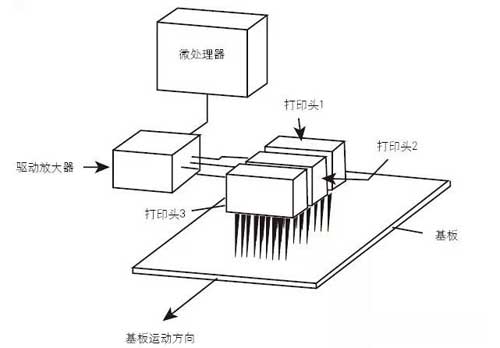No matter what kind of printing method is inseparable from ink, this has become an inherent concept of people, and inkless printing technology will undoubtedly break this concept, if it can be realized, this will become a new type of printing technology. There have been introductions about inkless printing technology in the industry. During the recent patent review process, the author also discovered a patent on "inkless printing equipment", so it has a strong interest in it. "Inkless printing equipment" patent On July 27, 2011, the European Patent Office issued the "inkless printing equipment" patent numbered "GB2477139 (A)". The inventors were the British WYRESCHRISTOPHERANTHONY, WALKERMARTINROBERT, JARVISANTHONYN, CRIDLANDJOHN. In this patent, the inkless printing uses a dry process, and does not require imaging materials such as toner and ink when printing images, but it requires the use of a specific printing material-a substrate, which contains photosensitive color-forming materials such as diacetylene. When these photosensitive color-forming materials are exposed to a suitable energy source (such as a laser), it is easy to change the color. In order to print the desired image, the laser beam should be directly irradiated to different areas of the substrate, so that the substrate changes from colorless to any color. The substrate as the printing material includes a base layer and a photochromic layer. The photochromic layer can be doped with infrared (IR) spectrum / near infrared (NIR) spectrum absorbing material in the diacetylene material, or placed in the infrared (IR) spectrum / near infrared (NIR) spectrum absorbing material Above. The core component of inkless printing machine The core component of the inkless printer is a substrate marking device, which is mainly composed of a radiation source and a control system, as shown in the figure. Schematic diagram of substrate marking device This device includes 3 print heads (ie, print head 1, print head 2, and print head 3), each of which is a radiation source and is used to emit radiation of different wavelengths. The print head 1 and the print head 3 may be composed of an infrared (IR) radiation / near infrared (NIR) radiation emitter array, or may be composed of a thermal contact type print head to provide radiation of a first wavelength. Thermal radiation can have a broad spectrum or be limited to a specific frequency range. Suitable thermal radiation emitters include, but are not limited to: infrared (IR) / near infrared (NIR) lasers, infrared (IR) / near infrared (NIR) Light-emitting diodes (LEDs), resistive or inductive heating elements. The print head 2 is composed of an array of ultraviolet (UV) emitters to provide radiation at a second wavelength. Suitable ultraviolet (UV) emitters include but are not limited to: UV lasers, UV light emitting diodes (LEDs), and UV lamps (such as mercury lamps) Or deuterium lamp). Each print head has an independent transmitter, which can be individually addressed and can be individually controlled by a microprocessor via a drive amplifier.
A stationery item used to protect documents.Inside pages are typically 20, 30, 40, 50 pages, with single pockets and double pockets.The size of the brochure is generally A4, but also B5.Cover is generally PP, plus a variety of printing patterns.There is a built-in information card in the middle, which can be handwritten notes.General use in schools and offices
Display Books,Plastic Display Book,Solid Cover Display Book,Display Clear Book shaoxing chaofeng stationery manufacturing CO.,LTD. , https://www.chaofengstationery.com
